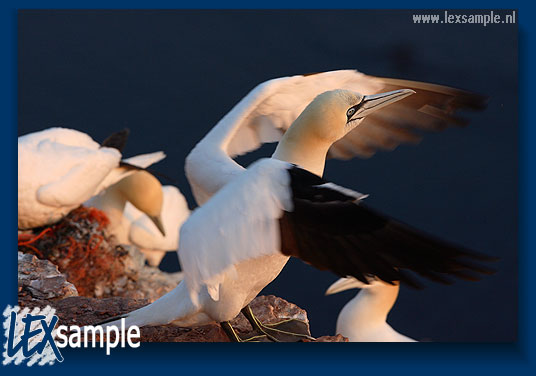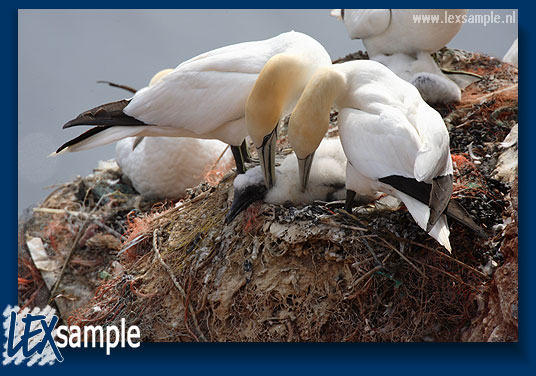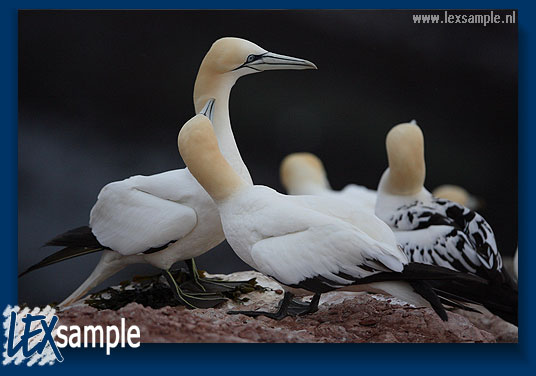 |
The Northern Gannets (Morus bassanus; German: Basstölpel) are the most conspicuous inhabitants of the western cliffs. The breeding season runs from March till August.
|
 |
Male and female have identical plumage, including the yellowish head.
|
 |
A round tour of about two kilometers over the Ueberland leads along the sixty meters high cliffs where the gannets and other seabirds have chosen to breed.
|
 |
A gannet's skull is reinforced to withstand the collision with the water surface when the bird dives for fish. The eyes are projected forwards to enable stereo viewing.
|
 |
The first young appear in May, a grey chick which gradually will turn more white and fluffier in the coming weeks. A gannet's nest is build from kelp, but they do uses the artifical orange and green fishing ropes and other plastics too.
|
 |
An adult birds aims to land at a ledge where one of the colonies is located.
|
 |
The distance between gannets is determined by how far their beaks can reach, sharing their territory with guillemots and kittywakes.
|
 |
A partner has arrived to take over the incubation turn; the partner on the nest is reluctant to release the nest and only leaves after the other bird persists, so it seems.
|
 |
A number of young birds are flying around the colony. The younger the bird, the darker their feathers will be.
|
 |
This impressive colony was only founded in 1991; in 2002 some 130 pairs were counted.
|
 |
The couple display various types of behaviour: beak touching (welcome), head shaking (to announce departure, ensuring the mate will remain with the nest), biting in the neck (affection), but also threatening the neighbours in case of a territorial conflict.
|
 |
|
























 Next page
Next page
